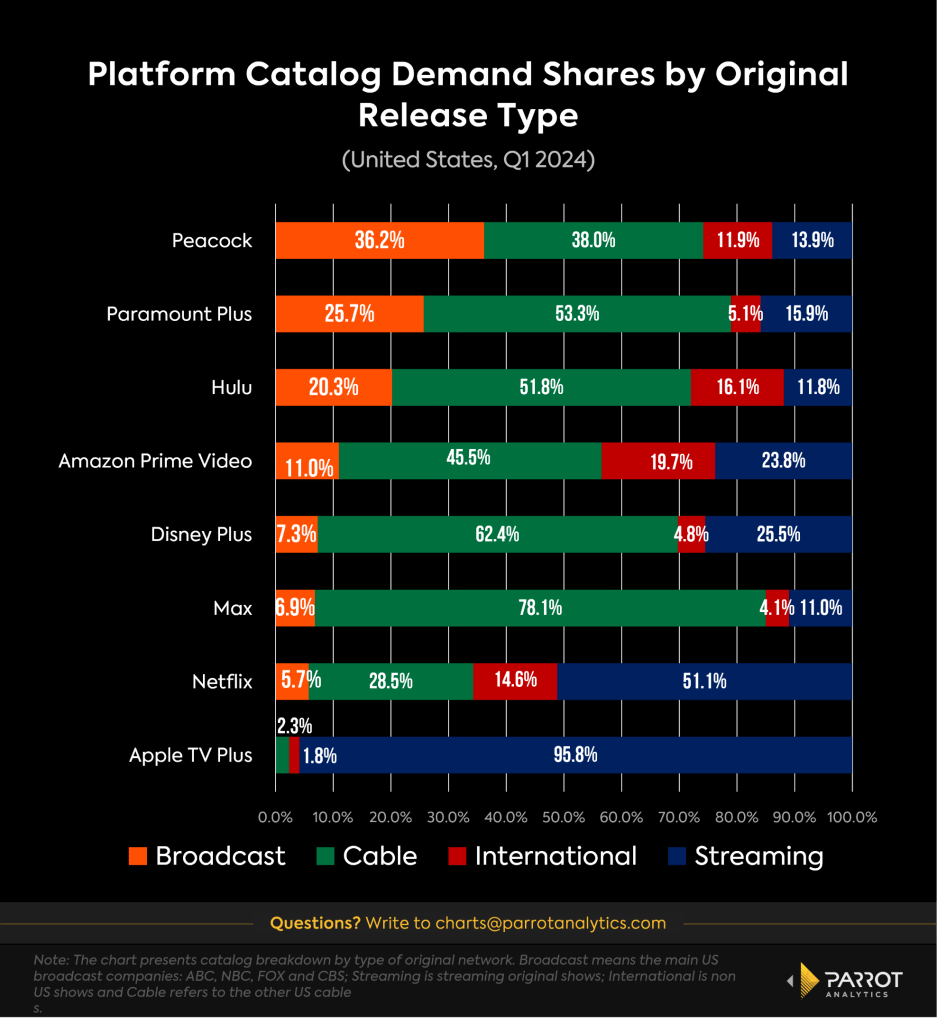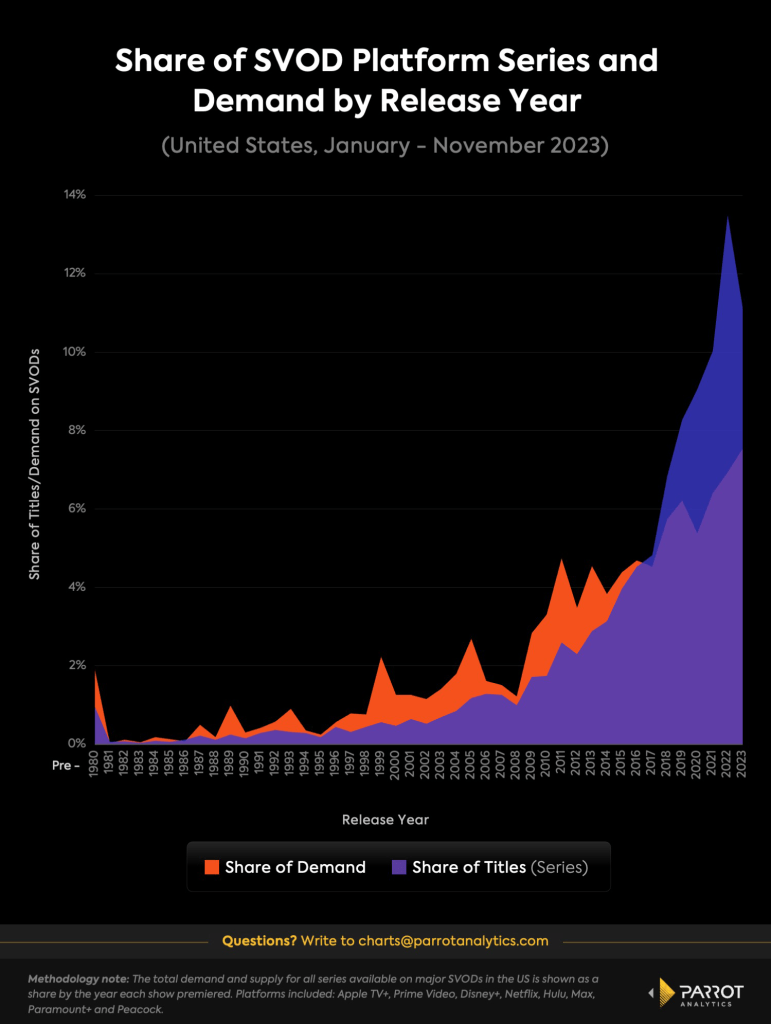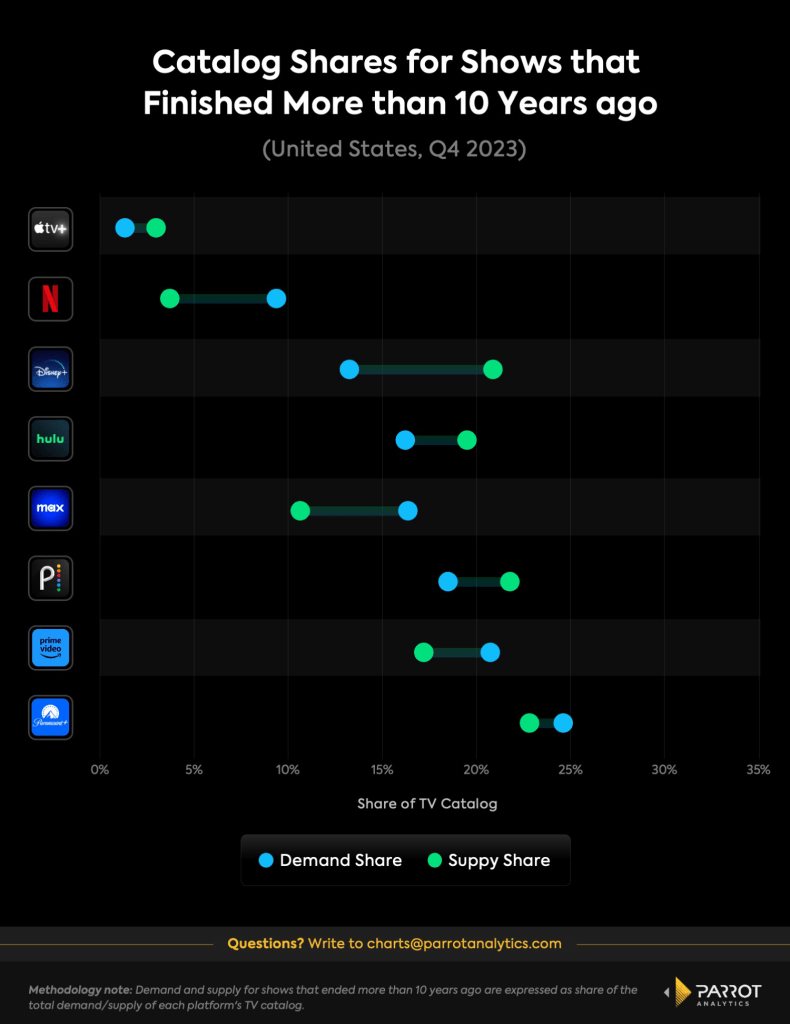Streaming Giants Rely on Classic TV Shows as New Scripted Content Declines | Charts
Old linear and broadcast shows play a crucial role in the strategy of streaming platforms. Some of the most popular shows on those platforms such as “Friends,” “The Office,” “Grey’s Anatomy,” and “Criminal Minds” fall under this category. They tend to generate significant audience demand, hours of viewership, retention, and — in special cases — acquisition power.
As of Q1 2024, all the main SVOD platforms, except Apple TV Plus and Netflix, generated more than half of their platform catalog demand from shows originally released on linear TV (broadcast plus cable). This share was higher for Max, which relies largely on HBO’s acclaimed TV shows; Paramount+, which gets a large chunk of its demand from Nickelodeon and CBS titles; and Peacock, which relies on NBC and Bravo shows.

This reliance may become problematic as the number of scripted broadcast shows continues to decline. Besides the cash flow generated by linear shows and the popularity of broadcast franchises like “Law & Order,” “Chicago,” “NCIS” and “The Walking Dead,” scripted programming is playing a smaller role in linear TV, while news and sports remain key drivers.
Additionally, the industry trend to reduce the number of seasons per show due to rising costs and declining linear ratings is concerning. Older shows tend to over-perform relative to what percentage of supply they account for, as illustrated in the chart below.

Across major U.S. SVODs, 52% of shows available on these platforms premiered in 2019 or later, when the streaming wars began in earnest with the launch of new competitors Apple TV+, Disney+, Peacock and what was then known as HBO Max. However, while more than half of titles on these SVODs were released since 2019, these newer shows account for only 33% of demand for all shows available on these platforms. This means that new streaming releases did not displace the existing TV libraries.
Netflix and Max see particularly high performance from older shows in their catalogs. Despite making up only 4.5% of shows available on Netflix and around 10% of shows on Max, shows that ended more than 10 years ago were responsible for 10% of the demand for Netflix’s TV catalog and 15.4% of Max’s. However, Paramount+ is the platform that relies the most on the shows, with around 25% of demand.
Old linear shows fit perfectly into the streaming model. They not only help to retain subscribers but also fill the content gap between new original releases. It will be interesting to see how platforms will adapt to the shrinking pipeline of dynastic linear series.

The post Streaming Giants Rely on Classic TV Shows as New Scripted Content Declines | Charts appeared first on TheWrap.

